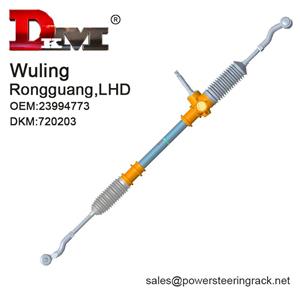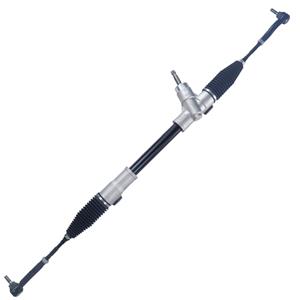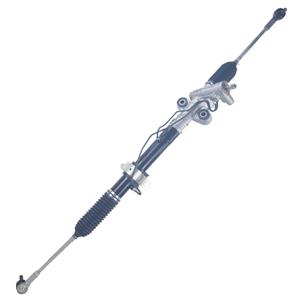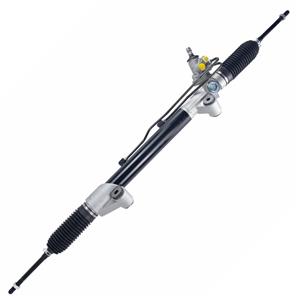Can I still drive if the hydraulic power steering rack is leaking?
As an important part of modern cars, the core function of the hydraulic power steering system is to reduce the driver's steering effort through hydraulic power assistance, improve the vehicle's handling and driving comfort. However, the hydraulic power steering system is not perfect. As the use time increases, the hydraulic steering rack inside the system may leak, which has a significant impact on the vehicle's safety and driving experience.
This article will explore in depth the reasons for the leakage of the hydraulic power steering rack, whether you can continue to drive after the leakage, and the serious consequences that may be caused by the leakage.
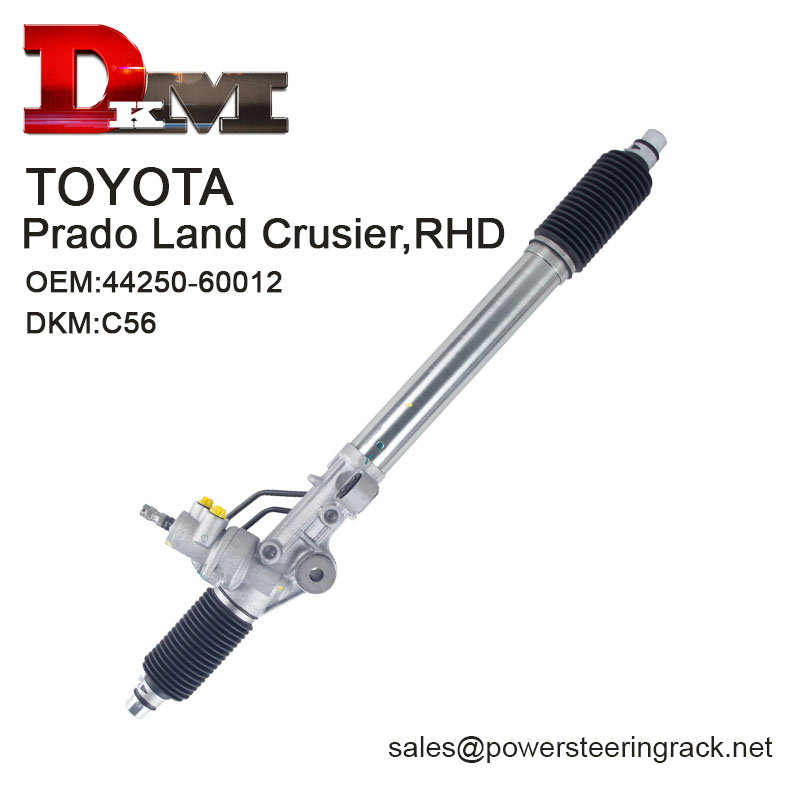
How does the hydraulic power steering rack work?
To understand the problem of hydraulic power steering rack leakage, you first need to understand its working principle. The hydraulic power steering system relies on hydraulic oil to provide power assistance. The hydraulic oil is pressurized and delivered to the steering rack through the power steering pump. The steering rack assists the steering wheel to turn through hydraulic pressure, so that the wheels turn according to the driver's intention.
The hydraulic power steering system is mainly composed of the following key components:
1. Power steering pump: driven by the engine, providing high-pressure oil to the hydraulic system.
2. Hydraulic oil pipeline: connects the pump, steering rack and oil tank to transmit hydraulic oil.
3. Hydraulic steering rack: contains rack, gear and hydraulic cylinder, responsible for converting hydraulic pressure into mechanical movement.
4. Oil tank: stores hydraulic oil to ensure the supply of hydraulic oil in the system.
The seal ring in the hydraulic steering rack and the hydraulic cylinder maintain high-pressure oil. These components ensure that the hydraulic oil will not leak under high pressure. Once these sealing components are worn or damaged, the hydraulic oil will leak, causing the system to not work properly.
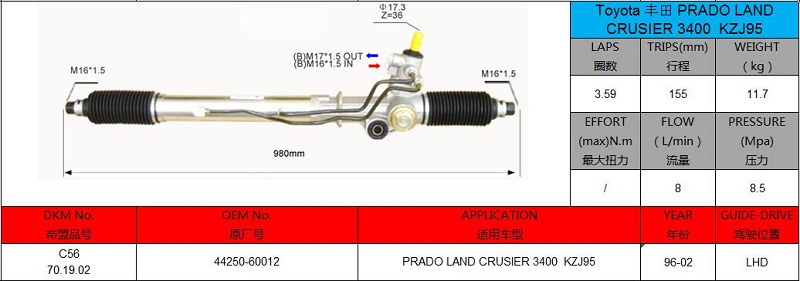
What is the reason for hydraulic power steering rack leakage?
Leakage of hydraulic power steering rack is usually caused by a variety of factors. Understanding these reasons can help car owners identify the problem in advance and take appropriate measures.
1. Aging or damage of seals: The seals in hydraulic steering racks are usually made of rubber or similar materials. These materials will gradually age, harden or even crack over time, causing hydraulic oil leakage. In addition, if the vehicle has experienced multiple high or low temperature environments, the aging rate of seals will accelerate.
2. Low quality or deterioration of hydraulic oil: The quality of hydraulic oil directly affects the lubrication effect of the steering system and the life of the seals. If inferior hydraulic oil is used or the hydraulic oil is not replaced for a long time, the impurities and acidic substances in the oil will corrode the seals, aggravate their wear, and cause leakage.
3. Too high pressure inside the system: The normal operation of the hydraulic power steering system depends on stable hydraulic pressure. If the pressure inside the system is too high, the seals will be subjected to excessive stress, causing them to deform or damage, and eventually cause leakage.
4. Mechanical damage: The hydraulic steering rack may be damaged by external impact or improper operation. For example, hitting the shoulder or a large pothole while driving at high speed may cause the steering rack to deform or crack, which in turn causes leakage.
Can the hydraulic power steering rack still be driven after leakage?
Faced with the problem of hydraulic power steering rack leakage, many car owners are first concerned about whether the vehicle can continue to drive. In theory, after the hydraulic steering rack leaks, the vehicle can still be barely driven, but there are serious safety hazards.
1. Steering power weakening or failure: Hydraulic oil leakage causes the hydraulic pressure in the system to drop, and the steering power will be significantly weakened. In the case of complete leakage of hydraulic oil, the steering system will lose power, and the driver will need to apply more force to turn the wheel, especially when driving at low speed and parking. In this case, the vehicle's handling is greatly reduced and the driving difficulty is significantly increased.
2. Slow steering response: As the hydraulic oil gradually leaks, the response time of the steering system will be extended. After the driver turns the steering wheel, the reaction of the wheel may become sluggish, which will affect the driving stability of the vehicle, especially in curves or emergency avoidance.
3. Abnormal steering noise: After the hydraulic oil leaks, air may enter the system, causing abnormal noise when turning. These abnormal noises usually appear as "buzzing" or "squeaking" noises, indicating that there are bubbles or insufficient oil in the system.
Although the vehicle can still barely drive in the case of a slight leak, continuing to drive at this time will face great risks. If the hydraulic oil suddenly leaks completely during driving, the driver will not be able to effectively control the direction of the vehicle, and traffic accidents are very likely to occur. Therefore, after the hydraulic steering rack leaks, you should stop driving immediately and seek professional repairs.
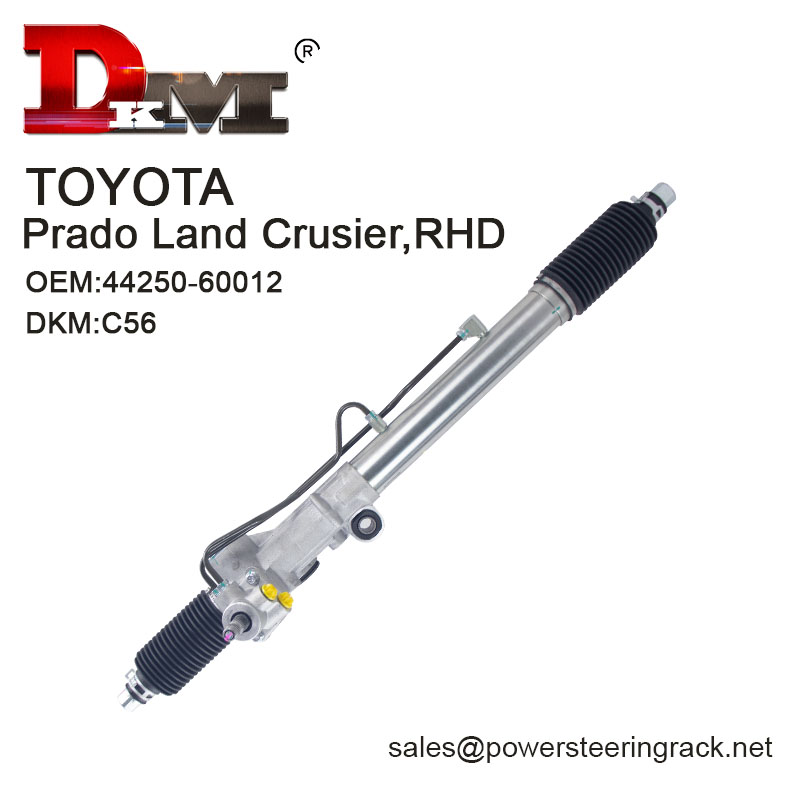
What are the consequences of hydraulic steering rack leakage?
As mentioned earlier, hydraulic oil leakage will cause the steering power to weaken or even completely fail, which will greatly reduce the vehicle's handling. The driver needs to exert more force when steering, which is especially dangerous for inexperienced drivers. In an emergency, the lack of steering power may cause the vehicle to fail to avoid obstacles in time or make correct steering operations, causing accidents.
Secondly, hydraulic oil not only plays a booster role in the system, but also is responsible for lubrication and cooling. If the hydraulic oil leaks, the rack and gear in the system will lose lubrication protection, resulting in increased friction and temperature. In this case, the rack and gear will wear abnormally, and may even cause damage to the entire steering system. If the problem is not solved in time, the entire steering system may eventually need to be replaced, and the repair cost is high.
In addition, in the case of hydraulic oil leakage, the power steering pump will continue to operate to maintain the hydraulic pressure in the system. This will cause the power steering pump to be in an overloaded state. Long-term overload operation will cause the pump body to overheat and increase wear, and eventually cause the power steering pump to fail. Once the pump body is damaged, the steering power will completely fail, and the repair cost will further increase.
Finally, hydraulic oil is a highly polluting chemical. Leakage will not only damage the vehicle itself, but also have a negative impact on the environment. If hydraulic oil leaks onto the ground, it may contaminate the soil and water sources. In addition, leaking hydraulic oil will also corrode the vehicle chassis and other components, increasing the difficulty of maintenance.

How to deal with hydraulic power steering rack leakage?
Once leakage is found, the owner should send the vehicle to a professional repair shop for inspection and repair as soon as possible. The repair technician will determine the specific location and cause of the leakage and replace the damaged seals or damaged parts. Early detection and treatment of leakage problems can avoid greater losses. In addition, in order to prevent hydraulic steering rack leakage, the owner should regularly check the status of the steering system, including the level and quality of the hydraulic oil, the integrity of the seals, etc. In addition, timely replacement of hydraulic oil and use of high-quality oil products are also important measures to extend the life of the system.
Try to avoid intense steering operations when driving, especially when driving at low speed or parking. Excessive steering operations will increase the load on the steering system and increase the risk of leakage.

